Let us mark the 972nd birthday of Omar Khayyam
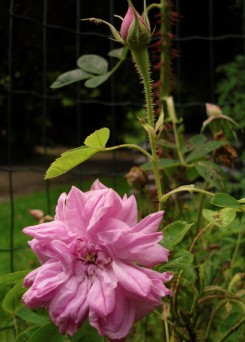 Today, 18th May 2020, is the 972nd anniversary of the birth of the man known as Omar Khayyam. As most readers will know, the historical Omar Khayyam, born in 1048 in Nishapur, was a famous astronomer, mathematician, and philosopher. He may also have written at least some of the many verses of poetry that have been attributed to him. This last point is still very much a matter of dispute, as the new translation and commentary on the Rubaiyat of Omar Khayyam by Juan Cole, reviewed in the previous post, makes clear. But, regardless of one’s view on the question of authorship, 18th May is a good time to celebrate both the established achievements of Omar Khayyam himself, and the contribution that the verses attributed to him have made to all our lives.
Today, 18th May 2020, is the 972nd anniversary of the birth of the man known as Omar Khayyam. As most readers will know, the historical Omar Khayyam, born in 1048 in Nishapur, was a famous astronomer, mathematician, and philosopher. He may also have written at least some of the many verses of poetry that have been attributed to him. This last point is still very much a matter of dispute, as the new translation and commentary on the Rubaiyat of Omar Khayyam by Juan Cole, reviewed in the previous post, makes clear. But, regardless of one’s view on the question of authorship, 18th May is a good time to celebrate both the established achievements of Omar Khayyam himself, and the contribution that the verses attributed to him have made to all our lives.
So please join us in marking the occasion in an appropriate way. We had hoped this year to be able to add a current photo of the rosa Omar Khayyam which grows in our garden, which has been getting ready to bloom (very early) for over a week now. But the buds remain stubbornly closed, so that image will have to wait for a later post. Instead we show an earlier picture of the same variety of rose, planted in the garden of the Ancient India and Iran Trust in Cambridge to mark the Rubaiyat and FitzGerald anniversaries in 2009.
Bob Forrest has recently been researching the life and works of Thomas Wright, biographer and schoolmaster who lived most of his life in Olney near Bedford. Born in 1859, he became the principal of a school he set up in the town, as well as an energetic author, whose books include several extensive biographies of earlier poets as well as collections of his own poems and other writings.
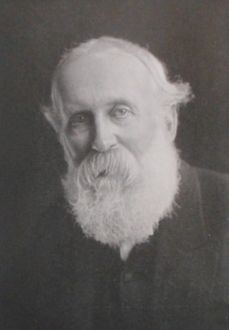 For Rubaiyat enthusiasts, Wright is of particular interest for two things. These are his The Life of Edward FitzGerald (2 volumes, Grant Richards, London 1904) and his later book of Omar–related verse, Heart’s Desire (Long’s Publications Ltd, London 1925.) The biography of FitzGerald is one of the earliest such works, and contains reports on many interviews with people who had known the poet, as well as early photographs of people and places from his life. There are also valuable appendices, including a facsimile of the Museum Book 1833, one of FitzGerald’s early commonplace books.
For Rubaiyat enthusiasts, Wright is of particular interest for two things. These are his The Life of Edward FitzGerald (2 volumes, Grant Richards, London 1904) and his later book of Omar–related verse, Heart’s Desire (Long’s Publications Ltd, London 1925.) The biography of FitzGerald is one of the earliest such works, and contains reports on many interviews with people who had known the poet, as well as early photographs of people and places from his life. There are also valuable appendices, including a facsimile of the Museum Book 1833, one of FitzGerald’s early commonplace books.
Wright’s second Rubaiyat related work, Heart’s Desire, is described as being “principally a presentment from various translations of the quatrains of Omar Khayyam that relate to SAKI, the beautiful CUPBEARER.” The book reflects, inter alia, Wright’s friendship with the writer and linguist John Payne, who had made his own translation of Khayyam’s Rubaiyat from the Persian. Heart’s Desire is illustrated by Cecil W. Paul Jones, and Bob Forrest’s report on his research shows several of these illustrations as well as giving many examples of the verses collected in the book.
Bob’s full report can be found on his web site at http://www.bobforrestweb.co.uk/The_Rubaiyat/N_and_Q/Thomas_Wright/Thomas_Wright.htm. It contains more details about Wright’s life and friendships as well as information on his many other publications. Altogether it provides a fascinating picture of the busy life of a hard working writer and local activist in the late 19th and early 20th centuries. Our congratulations to Bob Forrest for pulling all this research together and our thanks to him for sharing it with us.
A new translation of ‘Khayyam’s’ Rubaiyat
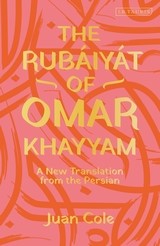 It is not often that we are treated to a completely new translation from the Persian of the Rubaiyat attributed to Omar Khayyam. So we have been delighted to learn from publisher I B Tauris of their recent publication of a new version in English of the Persian verses, produced by Professor Juan Cole. Details of the book and where to find more information are given at the end of this post. *
It is not often that we are treated to a completely new translation from the Persian of the Rubaiyat attributed to Omar Khayyam. So we have been delighted to learn from publisher I B Tauris of their recent publication of a new version in English of the Persian verses, produced by Professor Juan Cole. Details of the book and where to find more information are given at the end of this post. *
Juan Cole is described as ‘a public intellectual, prominent blogger, and essayist’; he is also Professor of History at the University of Michigan. Previous translations by him include some Arabic works by Kahlil Gibran. He says that he has been thinking about doing the Khayyam translation since his student days in 1976 when it struck him that the original Persian verses had things to say to a contemporary audience. His translation is based on the quatrains contained in the Bodleian manuscript of the Rubaiyat (Ouseley 140) which dates from 1460 CE. Professor Cole has included all but one of the 158 verses in the MS and they are presented in the original order of the MS. His translation is in a mixture of blank and free verse, avoiding archaic terms and objects. He says that ‘like FitzGerald I feel that it is more important [that} the poetry be accessible to contemporaries than for this translation to be pedantic.’
On first reading, we find the translation pleasant to read and illuminating, and we look forward to studying it more closely. The book also contains a 17 page Introduction and a considerably longer Epilogue, both by Professor Cole. The Introduction provides general background to the verses and how they came, through FitzGerald’s translation, to prominence and influence in the Western literary world of the late 19th and 20th century. The Epilogue is subtitled Persian Literature and the Rubaiyat and it deals with the nature of the Khayyamic verses and how they and their content fit into the history of mediaeval Arabic, Mongol and Persian culture and literature. Professor Cole is a supporter of the view that the verses were by many different authors; they were collected together, for various reasons, under the name of Omar Khayyam, though he did not write them. The Epilogue presents an interesting analysis of the disputed question of the meaning of wine and other themes in the quatrains, and how this fits with what Professor Cole describes as secular Muslim civilization.
Overall this book provides a valuable addition to the interpretation and study of the Rubaiyat of Omar Khayyam. It is well worth taking a look at. There are both hardback and paperback editions. For details, see https://www.bloomsbury.com/uk/the-rubaiyat-of-omar-khayyam-9780755600519/. This gives information on the paperback version with links to the other formats available.
* Cole J., The Rubaiyat of Omar Khayyam. A New Translation from the Persian. (London: I B Tauris, 2020)
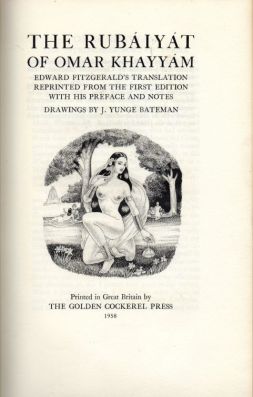 Bob Forrest has been researching a Rubaiyat artist, John Yunge-Bateman, whose edition of FitzGerald’s poem was first published by Golden Cockerel Press in 1958. Some of us were rather ‘surprised’ by the subject matter of this set of illustrations when we first encountered it. As Bob puts it in his introduction to the article detailing his investigations:
Bob Forrest has been researching a Rubaiyat artist, John Yunge-Bateman, whose edition of FitzGerald’s poem was first published by Golden Cockerel Press in 1958. Some of us were rather ‘surprised’ by the subject matter of this set of illustrations when we first encountered it. As Bob puts it in his introduction to the article detailing his investigations:
Naval officer and artist John Yunge–Bateman will be known to most readers of this essay mainly for his somewhat erotic illustrations of The Rubaiyat. But though he certainly had a penchant for depicting naked women, there is more to him than that, and he deserves also to be remembered for his other wide–ranging book illustrations, notably for works of natural history and educational books for children. But let us begin with his Rubaiyat.
The full article on Yunge-Bateman’s life and works is published on Bob Forrest’s web site. It can be accesed via the following link http://www.bobforrestweb.co.uk/The_Rubaiyat/N_and_Q/John_Yunge-Bateman/John_Yunge-Bateman.htm. Bob gives us a detailed commentary on Yunge-Bateman’s Rubaiyat, with excellent copies of the images. He sets out the artist’s parallel career in the Navy in two world wars, and lists many other books and magazines that Yunge-Bateman worked on, including Ovid’s Metamorphoses, some of Shakespeare’s works as well as a short-lived Space Age comic. There are also many images from these different works, which illustrate well the great variety of Yunge-Bateman’s style.
Altogether Bob has provided us with a very interesting Rubaiyat related story and it is well worth a read. Our thanks to Bob yet again for sharing his work with us all.
In praise of the number four
Charles Mugleston has sent us the following reflection on the manifestations of the number four, including, of course, the quatrain. Many thanks, Charles, for this delightful contribution with a spring-like feel.
As a young boy growing up in the country, I loved watching the rather shy wrens hopping about in the hedges and quickly flying off in all directions… this led me to collecting farthings resplendent as they were in their latter years with the very simple but beautiful design of a wren – I mean, forget sovereigns ! This led me on to eventually collecting older and older farthings and discovering that the name derived from the word fourthing – a fourth part of a silver penny being cut in four.
Roll on the clock, many quarter, half and full moons… and serendipity – Edward FitzGerald and Quatrains.
In 1850 Alfred Tennyson published anonymously his Masterpiece In Memoriam “Ring out wild bells…” can’t you just hear them, and in 1859 his life long friend E.F.G published anonymously his Masterpiece The Ruba’iya’t of Omar Khayya’m – what do they have in common ? what helped them become known and loved the world over ? part of the heart of the matter is…the Quatrain.
Reading quatrains – again and again, they get under your skin, penetrate your pores, resonate with the fourfold chambers of the heart – the four quarters of the world for a quatrain is indeed a universal phenomemon. Just look at the poetic forms from all quarters… quatrains are common to all, there is if of interest a helpful entry on Wikipedia to view – much better than the basic info in Websters Dictionary.
As the old Persian saying completes the circle… “The eloquence of Quatrain is the completion of Sublimity” … this is pregnant with Mystical as well as practical meaning, ie the fourfold Platonic Insights of Unity, Truth, Goodness and Beauty.
So, In Memoriam to E.F.G and in Homage to Hakuin – the Japanese Zen Master may I offer the following Easter Gift – quatrain to everyone with all good wishes and thanks.
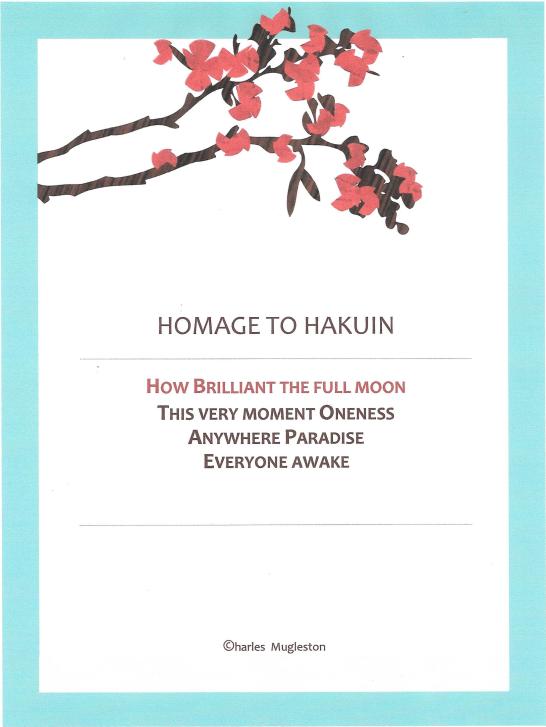
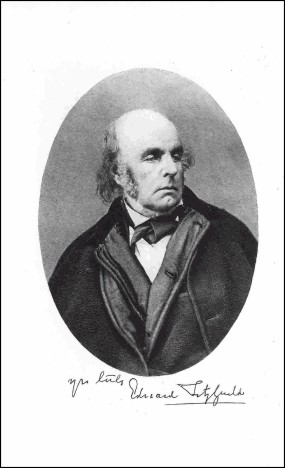 It is 211 years since the birth of Edward FitzGerald on 31st March 1809, and 161 years since the first publication of his Rubaiyat of Omar Khayyam on the same day in 1859. We hope that all our readers will be able to join us in marking these anniversaries in some way. FitzGerald’s Rubaiyat continues to give us much pleasure and support in today’s difficult times, and celebrating its birth provides a positive distraction from the present worries and the restrictions on our day to day living. It is interesting to reflect that Edward FitzGerald led much of his life, especially the later years, in a form of self isolation. In his case, there was no alternative of digital communications, but the vast corpus of letters that he left us is evidence of how important outside contacts remained to him, as they do to us today.
It is 211 years since the birth of Edward FitzGerald on 31st March 1809, and 161 years since the first publication of his Rubaiyat of Omar Khayyam on the same day in 1859. We hope that all our readers will be able to join us in marking these anniversaries in some way. FitzGerald’s Rubaiyat continues to give us much pleasure and support in today’s difficult times, and celebrating its birth provides a positive distraction from the present worries and the restrictions on our day to day living. It is interesting to reflect that Edward FitzGerald led much of his life, especially the later years, in a form of self isolation. In his case, there was no alternative of digital communications, but the vast corpus of letters that he left us is evidence of how important outside contacts remained to him, as they do to us today.
On this special day, we also send our own greetings to all our readers and their families . Keep safe and well. The OKR blog continues to be published, so if you have some interesting thoughts or findings about the Rubaiyat that you can share, please send them to us on the address you have, or on sandrabill@omarkhayyamrubaiyat.com, and we shall post them for all to enjoy. All positive contributions to our thinking are a blessing at this time.
At this time of social and economic upheaval, it is nice to find some areas of life where things are continuing in reasonably normal fashion. One of them is research on aspects of the Rubaiyat of Omar Khayyam. Bob Forrest has sent us information about a new piece of research he has carried out on Doris M Palmer, the artist behind a well known edition of the Rubaiyat which appeared in the inter-war period.
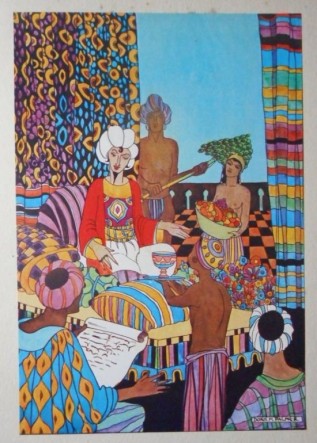 Doris Palmer’s Rubaiyat of Omar Khayyam was first published by Leopold B Hill in London in 1921. Until now very little was known either about this artist, or her work. Thanks to Bob’s efforts we now know her dates (1896-1977), and much about the earlier stages of her life. Bob has also identified various other works by this artist, though the details of her later life and work are still something of a mystery. He has also highlighted the importance of her husband the publisher Cecil Palmer to her early production of illustrated works.
Doris Palmer’s Rubaiyat of Omar Khayyam was first published by Leopold B Hill in London in 1921. Until now very little was known either about this artist, or her work. Thanks to Bob’s efforts we now know her dates (1896-1977), and much about the earlier stages of her life. Bob has also identified various other works by this artist, though the details of her later life and work are still something of a mystery. He has also highlighted the importance of her husband the publisher Cecil Palmer to her early production of illustrated works.
In parallel with his work on Doris Palmer, Bob has also investigated the life and works of Cecil Palmer about whom much more is actually known. The results of Bob’s work on both the Palmers is set out in full on his web site at http://www.bobforrestweb.co.uk/The_Rubaiyat/N_and_Q/Doris_M_Palmer/Doris_M_Palmer.htm . Apart from Doris Palmer’s later life, another mystery that remains is why her Rubaiyat was published not by her husband but by the firm of Leopold B Hill? In 1921 Cecil Palmer appears to have had quite a substantial publishing business, and he would probably have been well capable of producing a major illustrated work such as The Rubaiyat?
Readers interested in this period of Rubaiyat illustration and publication are recommended to explore Bob’s article which is full of much more valuable detail and many illustrations. We are grateful to Bob for sharing this work with us. If any readers have information to add to what we have so far learnt about Doris Palmer, Bob would be very glad to know. Please comment below.
The 1423 Lucknow manuscript – a description from the 1930s
Fred Diba has sent us an interesting cutting from The Illustrated London News of 17th December 1932 (p. 968) which announces the discovery of the 1423 Lucknow manuscript which contains 201 verses from the Rubaiyat of Omar Khayyam. The text of the article is shown below, together with an illustrative page from the MS.
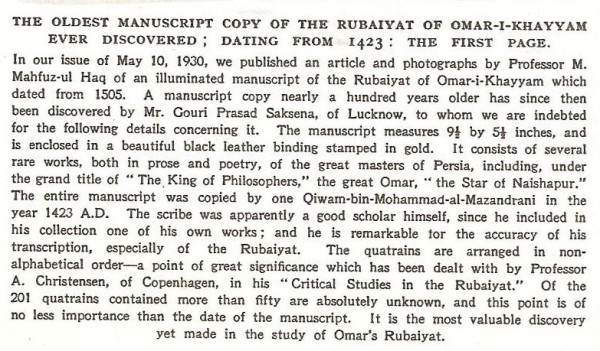
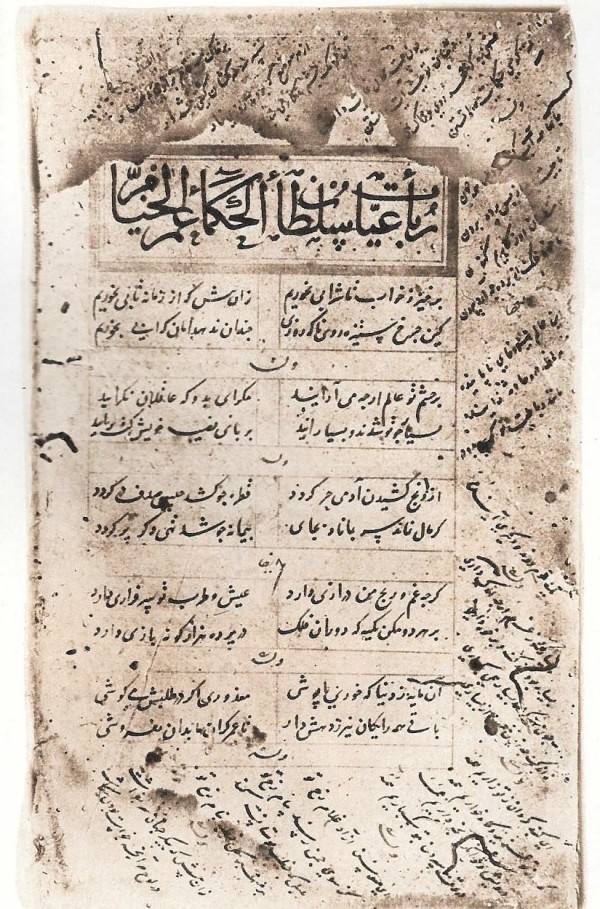
In the original article, the image is shown above the text.
This manuscript is also mentioned in Francois de Blois’ listing of Rubaiyat manuscripts (1). The MS published by Rosen in 1925 shows an even earlier date than the Lucknow one discussed here, but this date is disputed (2). We should be interested to hear more from anyone who is familiar with these manuscripts, particularly any reader who has actually seen the original Lucknow MS. As far as we know, it is still contained in the Gouri Prasad Saksena collection in Lucknow.
(1) de Blois, F, Poetry of the pre-Mongol Period, Vol V of Persian Literature, A Bio-Bibliographical Survey, London, RoutledgeCurzon, Sec Rev Ed, 2004.
(2) see Rodwell, E H , ‘Omar Khayyam, London, Kegan Paul et al, 1931, (p. xi)
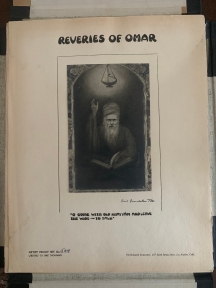 We were recently contacted by a reader who has a fine copy of The Reveries of Omar, illustrated by Cecil G Trew and published in 1929. The history of this rare book has been the subject of a number of earlier posts, most recently in https://omarkhayyamrubaiyat.wordpress.com/2019/09/13/cecil-g-trews-reveries-the-continuing-story/. Our contact, who we think is in California, writes as follows.
We were recently contacted by a reader who has a fine copy of The Reveries of Omar, illustrated by Cecil G Trew and published in 1929. The history of this rare book has been the subject of a number of earlier posts, most recently in https://omarkhayyamrubaiyat.wordpress.com/2019/09/13/cecil-g-trews-reveries-the-continuing-story/. Our contact, who we think is in California, writes as follows.
Do you know where I can sell a copy of the The Reveries of Omar illustrated by Cecil G Trew and what the value is? We have the deluxe copy with 25 plates. The condition is very good.
If you have advice to give the owner of the book, please comment below. If you are interested in acquiring the book, please contact us via sandrabill@omarkhayyamrubaiyat.com and we’ll pass your message on.
More work on the Rubaiyat by Austin Torney
In previous posts, we have commented on various versions of the Rubaiyat of Omar Khayyam that have been produced by artist and poet Austin Torney. The latest of these posts can be found on https://omarkhayyamrubaiyat.wordpress.com/2018/01/26/rubaiyat-ii-illustrated-from-austin-torney/ .
Austin has now produced an improved version of his Golden Rubaiyat Video Book. He writes about this as follows.
“Here we have the remastered iclone character actions of ‘Austin’s Golden Rubaiyat’ quatrains, with printed words matching the spoken words, color-keyed to the person speaking, which is my notion of a complete video book. Much more exciting than having dull looking regular subtitles in black and white.
The quatrains have been rearranged into a better flowing sequence. It came out really well. Enjoy. This is one of my best videos.”
The new video can be found on YouTube. It can be accessed via the following link: https://theomarkhayyamclubofamerica.wordpress.com/2020/01/29/austins-golden-rubaiyat-video-book-iclone-mostly-video-complete/ .